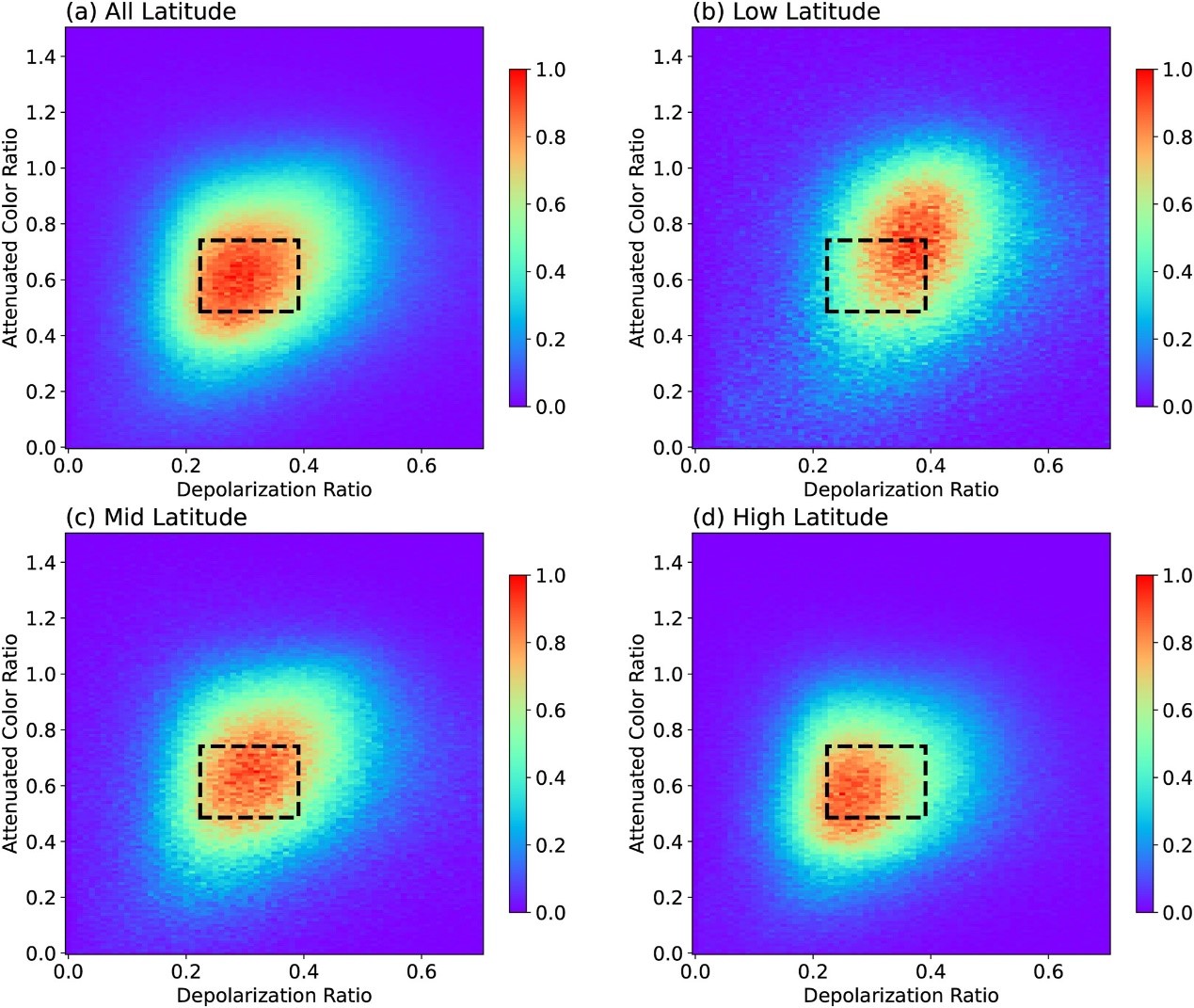
Recently, a team led by Prof. LIU Dong and Prof. WANG Zhenzhu from the Hefei Institutes of Physical Science of the Chinese Academy of Sciences, used Cloud–Aerosol Lidar with Orthogonal Polarization (CALIOP) spaceborne Lidar observations to study the global features of cirrus clouds composed of hollow ice crystals for the first time. Their research revealed the seasonal and global distribution characteristics of these ice crystals.
The relevant results were published in Geophysical Research Letters.
Cirrus clouds typically form at altitudes above 6 km and can cover up to 30% of the Earth's surface. The shapes, sizes, and orientations of the non-spherical ice crystals in these clouds significantly impact the Earth's radiation balance. Many of these ice crystals are hollow, which has not attracted enough attention in the previous remote sensing observations.
In this research, the team introduced the concept of "Mixed Modal Hollow Columns" (MMHC) to describe a phenomenon observed in nature where solid and hollow ice crystals mix. They analyzed data from the CALIOP satellite over a four-year period and compared it with the characteristics of the MMHC model, which they calculated using a physical optical approximation method.
They found that when the optical depth of the cirrus is less than or equal to 0.1 and the temperature is between -60℃ ~ and -40℃, it corresponds with MMHC model. Moreover, the study investigated the global distribution of cirrus clouds with these hollow ice crystals. They discovered that 20% of observed cirrus clouds exhibit this characteristic and are predominantly found in middle and high latitudes.
Interestingly, these hollow ice crystal cirrus clouds are more prevalent in the high latitudes of the Northern Hemisphere during autumn and winter, with the opposite trend observed in the Southern Hemisphere during spring and summer. Additionally, there is a noticeable contrast between their occurrence over land and sea, with a higher frequency over land areas. Regions such as Antarctica, Siberia, and Greenland exhibit the highest frequency of these cirrus clouds.
"In the future, in combination with the use of MMHC model, we can make a more accurate assessment of the radiation effects of such cirrus clouds and the MMHC modal can be used as a new ice crystal model to replace the Solid Column modal used in the past," said ZHU Xuanhao, first author of the paper.

Figure 1 Sample statistics of cirrus clouds with optical depth less than or equal to 0.1 and temperature between -60℃ and -40℃. The black rectangular box is the theoretical value region of characteristic cirrus clouds of hollow ice crystals calculated by the physical optical approximation method. (Image by ZHU Xuanhao)

Figure 2 Hollow ice crystals characteristic cirrus global distribution. (Image by ZHU Xuanhao)